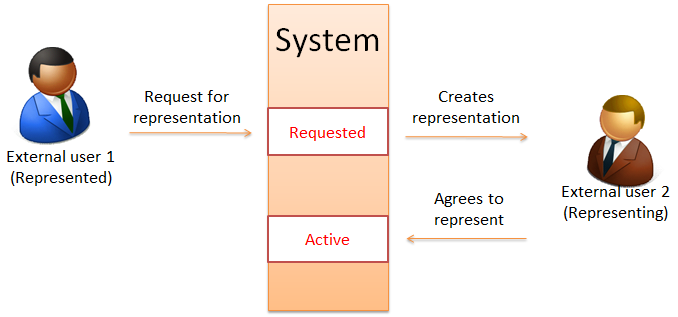
This chapter covers taxpayer representations administration. Every external user – an individual taxpayer – can assign the right to operate on behalf of him/her to other external user.
The process of representation rights assigning is described below and drawn in Figure 26
•Firstly, an external user representing himself/herself as individual taxpayer has to assign the rights of representation to other external user. This functionality is described in chapter 4.1. Search for taxpayer representatives.
•The external user, to whom the rights were assigned can make a decision – agree or disagree to represent (see chapter 4.4 Agree to represent or reject assigned representation rights).
•Representation becomes inactive, when representation period comes to the end.
•To revoke representation rights before the representation period ends, the represented taxpayer or administrator can revoke them (see chapter 4.5. Revoke the right to operate on behalf of the represented taxpayer).
•If taxpayer has at least one representative he/she can view a list. The list of representatives is described 4.5 Search for taxpayer representatives.
•If taxpayer needs to operate on behalf of other taxpayer, he/she should search in a list of represented taxpayer and choose one to represent (see 4.6. Choose to operate on behalf of another taxpayer).

Figure 26 Assign representation rights
NOTE. There are some rules, need to be noticed, for representations:
1. Representation rights can be assigned by:
•Taxpayer assigning representation rights to another system user.
•System administrator according paper based agreement.
2. Representation can be approved by the user who was asked to represent.
3. If representation rights were assigned by taxpayer himself/herself, they can be revoked by:
•Taxpayer asking for representation.
•Administrator of the system.
4. If representation rights were assigned by system administrator, only system administrator can revoke them.
5. There cannot be two identical representations: assigned to the same external user to represent the same taxpayer for the same representation period.